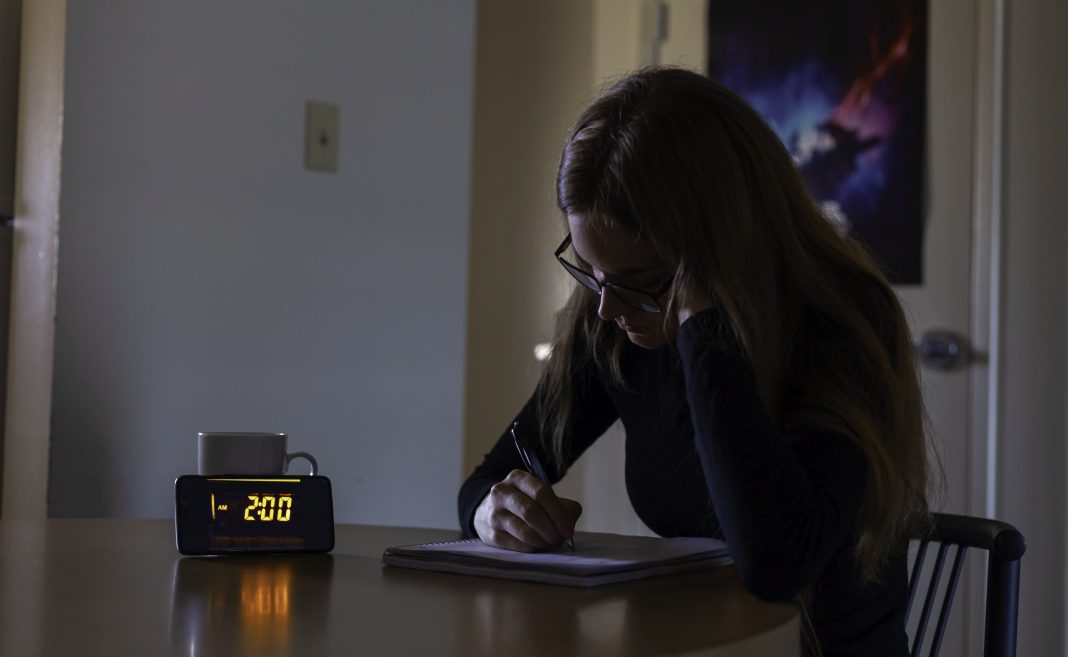After a long night spent writing assignments and study notes, many UTM students dread the sound of their morning alarm. Our sleep cycles, however, align with our body’s internal biological clock (also known as our circadian rhythms). It’s no surprise that the American Academy of Sleep Medicine (AASM) stresses the “serious consequences” to our health if we continue to interfere with our regular hours of sleep.
Delayed Sleep Phase Disorder (DSPD) occurs when one’s sleep pattern is “delayed” by two or more hours. A new study published in Proceedings of the National Academy of Sciences explains the origins of the disorder by unveiling its molecular makeup, down to its atoms and chemical composition.
According to the AASM, Delayed Sleep Phase Disorder is qualified by delayed sleep lasting at least seven days. DSPD does not typically harm the amount or quality of sleep one receives. However, the disorder can interfere with one’s academic studies, work, or social demands. For example, a person with DSPD often has trouble falling asleep and waking up at the desired time. A person with DSPD will likely struggle to wake up for an 8 a.m. exam or fall asleep at an appropriate time before a big day. For this reason, DSPD can often look like insomnia.
The AASM notes that sleep problems can result from various causes, such as medication use or mental health disorders. In any case, unhealthy sleeping patterns work in sync with our body’s internal clock, affecting our all-around performance throughout the day.
Carrie L. Partch and her team of researchers looked closely at a specific mutation of core clock genes—the genes involved in our sleep cycle. They discovered that this mutation lengthens the circadian period that, in turn, causes Delayed Sleep Phase Disorder.
As explained in a previous article by the Medium on circadian rhythms, “circadian rhythms are 24-hour internal clocks that are essential for our bodies to function well. This clock coordinates our physical and psychological behaviour throughout the day, most commonly known to align our sleep cycle.”
Within this clock are two essential proteins: CLOCK and BMAL1. Together, CLOCK: BMAL1 forms a feedback loop of transmitters that automatically allow cells to operate within this 24-hour cycle. A feedback loop can either promote a biological process (positive feedback loop) or end it (negative feedback loop).
Attached to the CLOCK: BMAL1 protein is the CRY1 “tail,” a repressor that shuts down this feedback loop at the appropriate time. As Partch and her team note, any mutation to these core clock genes will lead to changes in one’s circadian rhythm.
Partch and her team questioned how a mutation to this CRY1 “tail” could lead to Delayed Sleep Phase Disorder. They found that the mutation allows for easier identification of relevant properties between CLOCK: BMAL1 and the cell’s repressive states. By turning the tail’s focus away from its “shutting down” function, the mutation forms a closer bond to the CLOCK: BMAL1 proteins, telling cells to “keep going!” instead.
As a result, the circadian period lengthens, causing a delay in releasing melatonin and onset sleep associated with DSPD. This lengthening of the circadian period enables people, or “night owls,” to stay up late into the night and sleep late into the day. In contrast, a shortening of the circadian period allows “morning larks” to go to sleep early and wake up early the next day.
Through their study, Partch and her team uncover how understanding our molecular makeup underlies physiologically relevant effects on our circadian rhythms. By learning how these mechanisms work, Partch notes that we can “suggest strategies for treating prevalent circadian rhythm and sleep disorders.”
Healthy sleeping habits are essential for our overall health and wellbeing. If you or someone you know might be struggling with the effects of poor sleep, please contact the UTM Health & Counselling Centre for support.




Great post, thanks for sharing !!! – Prof Paulo Coelho